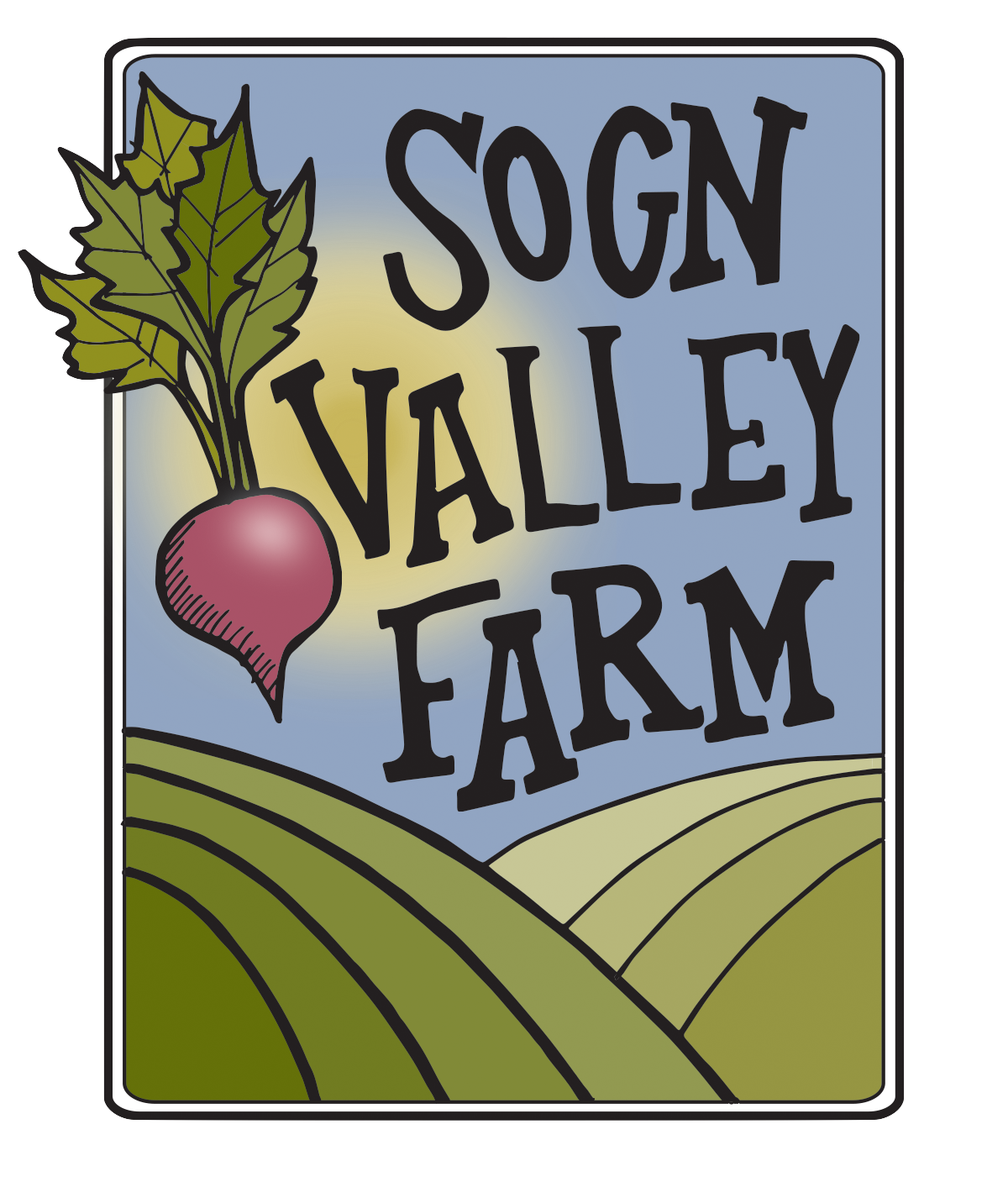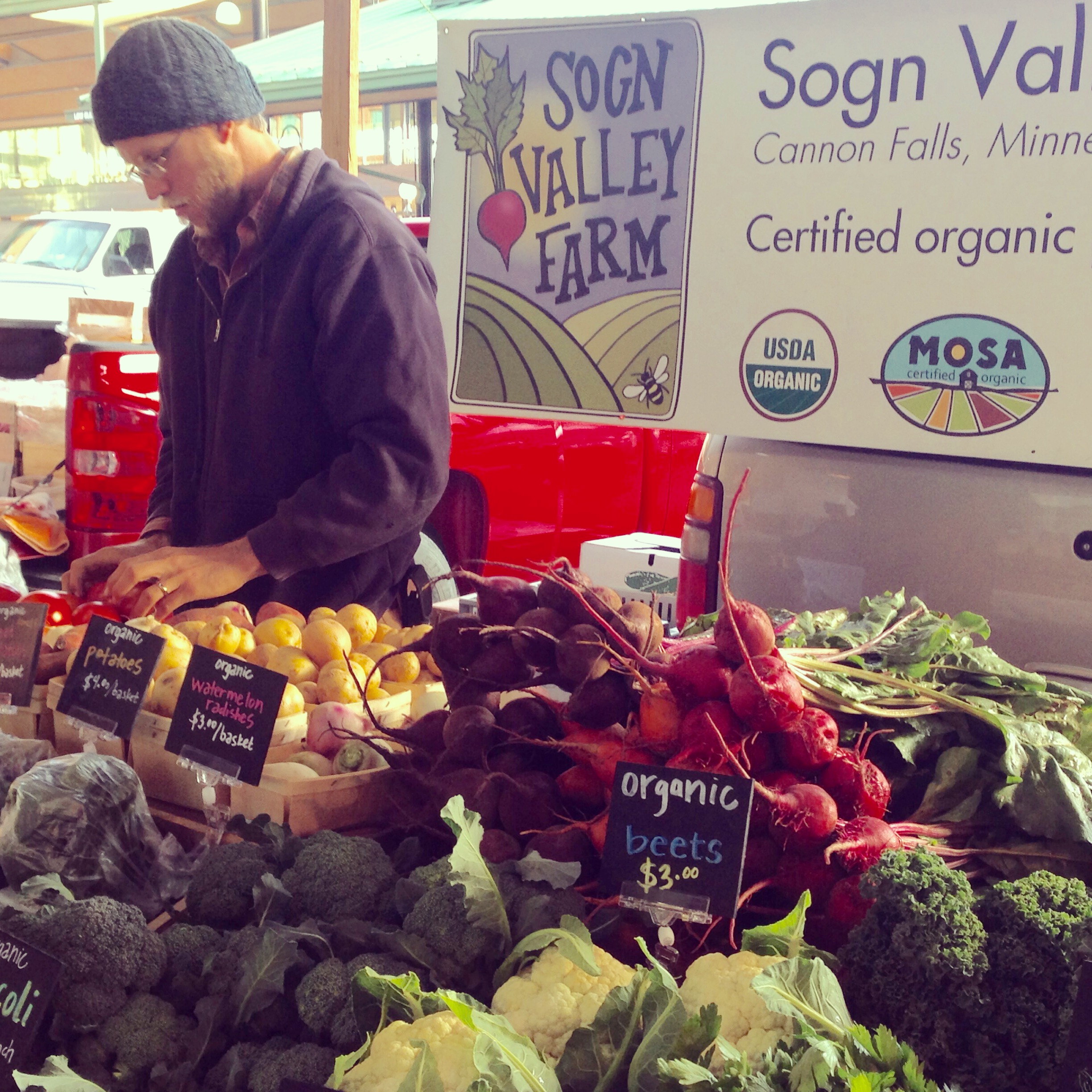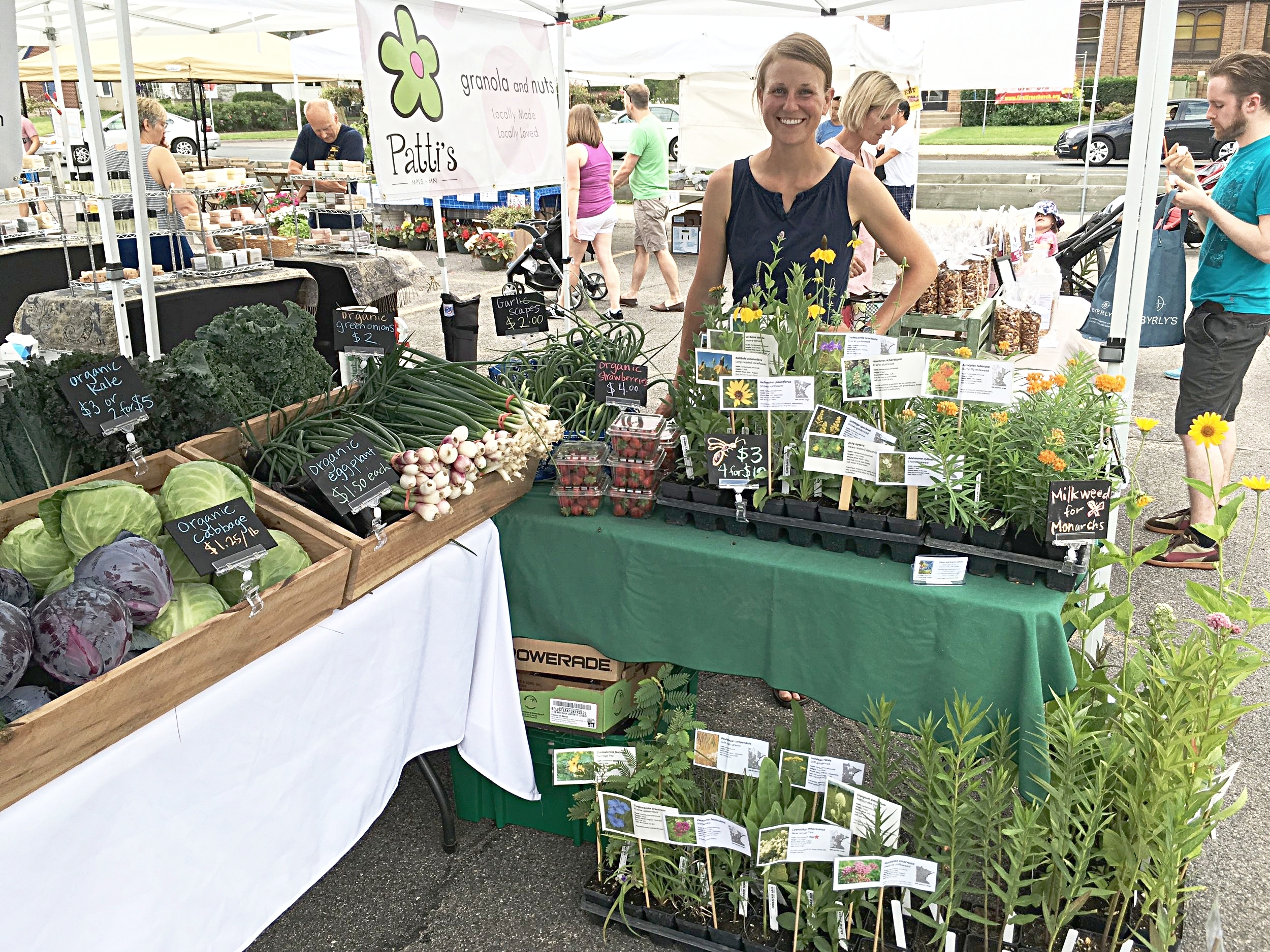Wow, who would have thought that five months could pass by without finding the time to write a blog post?! That's a little embarrassing. Something happens in June on a vegetable farm: after a winter of planning and a spring of planting, harvest begins. And not only that, farmers' markets start up, CSA pack commences, weeds emerge, and the rest is history.
At least that's how I felt during my first growing season as a Sogn Valley farmer. But despite the craziness of the last five months, I'm happy to say that it was a fairly successful season. That doesn't mean that everything went according to plan--early season wind storms caused damage to buildings and crops; diseases caused serious losses in our melon, cabbage, broccoli, and pepper crops; and we had unexpected expenses arise, such as replacement of the transmission in our delivery truck after it went kaput during a delivery in June. But, thankfully, much more went right this season.
First, we fared pretty well in terms of weather. The degree to which farmers' fate is in the hands of Mother Nature is unquestionable. We live on a pretty hospitable planet, but weather patterns are becoming increasingly volatile due to climate change. We had some periods of prolonged moisture that likely contributed to disease spread in our field, but we were spared the 5-inch rains, hail, and other devastating weather events.
Second, the crop mix and planting sizes worked out fairly well for the needs of our CSA and farmers' markets. This is a challenging aspect of starting a vegetable farm on land you haven't farmed and for markets you've yet to serve. With so much crop diversity and so many succession plantings (some crops, such as broccoli, cilantro, and lettuce, are planted roughly every two weeks throughout the season), it's not an easy task matching production to market needs. We have plenty of notes to guide us in tweaking our crop plan next season to produce more or less of a particular crop, or to have it ready to harvest earlier, later, or more consistently throughout the season.
Third, we met or exceeded our sales goals for our three types of markets: CSA, wholesale, and farmers' markets. The farmers' market was particularly unknown - would there be too much competition with the many other vegetable vendors? Would market-goers seek out organic, and be willing to pay the extra cost? We were amazed, and humbled, by how much our customers appreciated us being there, particularly because we were certified organic. We heard time and time again that people have been coming to the St. Paul Farmers' Market for years and have never been able to find enough organic produce. One woman even said that she and her friends had been driving to Minneapolis every weekend to find organic produce at the Mill City market, but now she no longer had to! Quite quickly, we developed a very loyal customer base that came by to support us week-after-week, and for that we are incredibly thankful.
So here we are in the final weeks of 2016 and the waning days of our first growing season. While we will attend at least a couple of winter farmers' markets in December, we have mostly wrapped up the "farming" for the season. But the to-do list remains long (surprised?). It's finally time to get around to some long-delayed infrastructure projects (on the employee cabins, the packing shed, and the greenhouse), wood cutting and splitting for winter heating, and a big back log of computer work, including entering and analyzing harvest and farmers' market sales data to guide 2017 decisions, creating education resources for our website, and tidying up our books ahead of the upcoming tax season. Karin is also now busy cleaning native seeds (removing chaff and other debris that comes with hand-harvested seed), which she will then subject to stratification (storage at a particular temperature and moisture level for a particular length of time) before we start seeding in the greenhouse in February.
Surely that's enough to keep us busy during what we hope will be a somewhat restful off-season...
Dana







